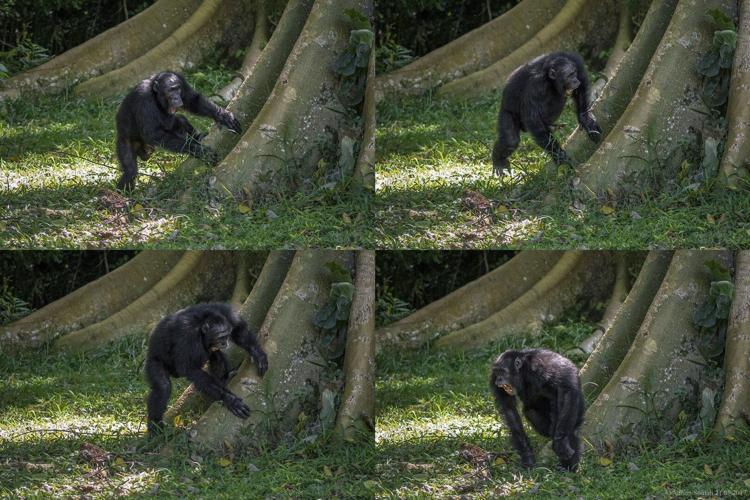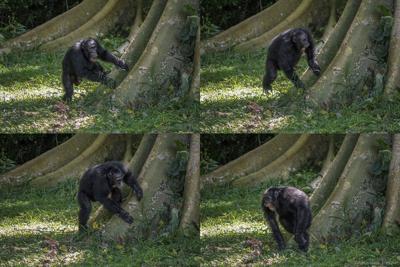Chimpanzees drum with regular rhythm when they beat on tree trunks, a new study shows.
last shared a common ancestor around 6 million years ago. Scientists suspect this ancient ancestor must have been a drummer ŌĆö using beats to communicate.
ŌĆ£Our ability to produce rhythm ŌĆö and to use it in our social worlds ŌĆö that seems to be something that predates humans being human,ŌĆØ said study co-author Cat Hobaiter, a University of St Andrews primatologist.
Previous research has shown that chimps have their own signature drumming style. A new analysis of 371 bouts of chimpanzee drumming demonstrates that the chimps ŌĆ£clearly play their instruments — the tree trunks — with regular rhythms,ŌĆØ said University of Amsterdam music cognition researcher Henkjan Honing, who was not involved in the study.
When bounding through the jungle, chimps will often grab hold of the tall buttress roots of rainforest trees. Sometimes they pound them several times to create low-frequency sounds that can be heard for a kilometer or more through the forest.
Scientists believe that the drumming is a form of long-distance communication, perhaps to alert other chimps where one chimp is waiting or the direction it is traveling.
ŌĆ£ItŌĆÖs a way of socially checking in,ŌĆØ said Hobaiter, adding that each chimp has its own ŌĆ£individual signature ŌĆö a pattern of beats that allows you to recognize whoŌĆÖs producing that drumming.ŌĆØ
The new work showed that chimps from different regions of Africa drum with distinctly different rhythms, with western chimps preferring a more even beat while eastern chimps used varied short and long intervals between beats. The research was published Friday in the journal .
It’s well-known that chimps use tools such as rocks to crack open nuts and sticks to ŌĆ£fishŌĆØ termites from their mounds. Tree roots can also be tools, the researchers say.
Chimps are selective about which roots they pound, said co-author Catherine Crockford, a primatologist at the CNRS Institute for Cognitive Sciences in France. Certain shapes and wood varieties create sounds that travel well through dense jungle.
The drummings are likely “a very important way to make contact,” she said.
At closer distances, chimps use a repertoire of vocal calls more complex than scientists once thought, according to a separate study in
Researchers analyzed how chimps combined sounds ŌĆö such as a call associated with resting and one used to invite play ŌĆö to create new meanings. In this example, the combined call was an invitation to nest together nearby at night.
ŌĆ£We have probably underestimated the flexibility and complexity of animal communication,” said Crockford, who was part of both research teams.
___
The Associated Press Health and Science Department receives support from the Howard Hughes Medical InstituteŌĆÖs Science and Educational Media Group and the Robert Wood Johnson Foundation. The AP is solely responsible for all content.































